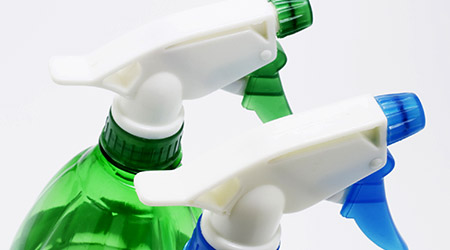CDC Updates COVID-19 Cleaning, Disinfection Guidance

The U.S. Centers for Disease Control and Prevention is still encouraging cleaning and disinfecting, but recently issued a reminder that you are more likely to contract the virus that causes COVID-19 from the air than from a surface.
“Based on available epidemiological data and studies of environmental transmission factors, surface transmission is not the main route by which SARS-CoV-2 spreads, and the risk is considered to be low,” the CDC said in an April 5 science brief.
“The principal mode by which people are infected with SARS-CoV-2 is through exposure to respiratory droplets carrying infectious virus.
“In most situations, cleaning surfaces using soap or detergent, and not disinfecting, is enough to reduce risk.”
That’s why the CDC, state, and local health departments continue to stress guidelines that include wearing masks, social distancing, hand washing, surface cleaning, and good indoor ventilation.
Surface Disinfection
“Surface disinfection has been shown to be effective for preventing secondary transmission of SARS-CoV-2 between an infected person and other people within households,” the CDC said.
“However, there is little scientific support for routine use of disinfectants in community settings, whether indoor or outdoor, to prevent SARS-CoV-2 transmission.”
The brief cited recent studies that suggest the risk of contracting the virus from touching a surface was low.
The brief said the risk was “generally less than 1 in 10,000, which means that each contact with a contaminated surface has less than a 1 in 10,000 chance of causing an infection.”
Still, the CDC said, it’s important to continue cleaning, even only with soap and water, as the virus can remain on certain surfaces.
“Data from surface survival studies indicate that a 99% reduction in infectious SARS-CoV-2 and other coronaviruses can be expected under typical indoor environmental conditions within three days (72 hours) on common non-porous surfaces like stainless steel, plastic, and glass,” the CDC said.
Air Transmission
It said cleaning with soap or a detergent, and disinfecting with a product or process designed to inactivate the virus, can reduce surface transmission.
“Cleaning reduces the amount of soil—dirt, microbes and other organic agents, and chemicals—on surfaces, but efficacy varies by the type of cleaner used, cleaning procedure, and how well the cleaning is performed,” the CDC noted.
When a person with suspected or confirmed COVID-19 has been indoors, the virus can remain suspended in the air for minutes or hours, the CDC said.
“The length of time the virus remains suspended and is infectious depends on numerous factors, including viral load in respiratory droplets or in small particles, disturbance of air and surfaces, ventilation, temperature, and humidity,” the CDC said.
“Wearing masks consistently and correctly can substantially reduce the amount of virus indoors, including the amount of virus that lands on surfaces.”
Infection Risk
The CDC said limited data suggests the risk of infection from entering a space where a person with COVID has been is low after 24 hours.
But during the first 24 hours, the risk is higher but can be reduced by increasing ventilation and waiting as long as possible before entering the space.
“People can be infected with SARS-CoV-2 through contact with surfaces,” the CDC noted.
“However, based on available epidemiological data and studies of environmental transmission factors, surface transmission is not the main route by which SARS-CoV-2 spreads, and the risk is considered to be low.”
For more information, contact CBIA’s Phillip Montgomery (860.244.1982).
RELATED
EXPLORE BY CATEGORY
Stay Connected with CBIA News Digests
The latest news and information delivered directly to your inbox.


